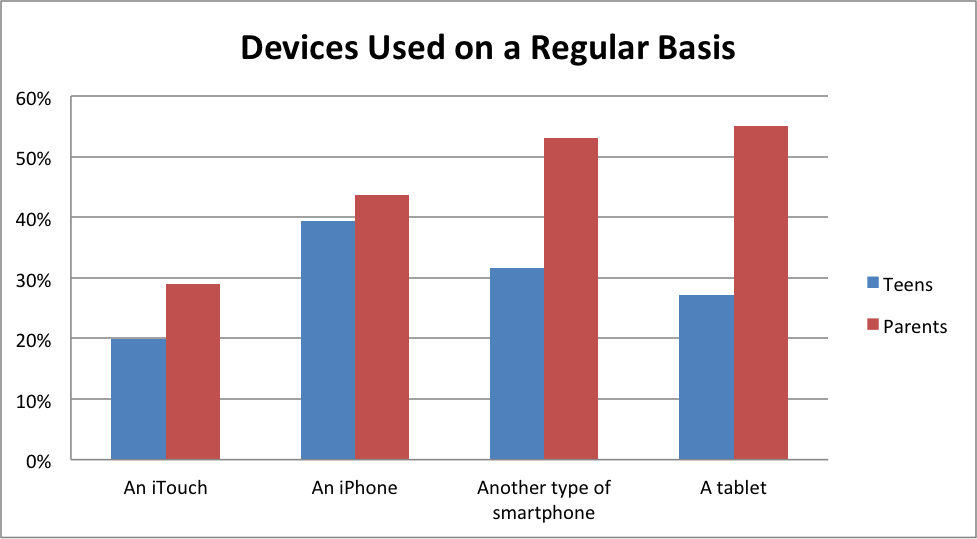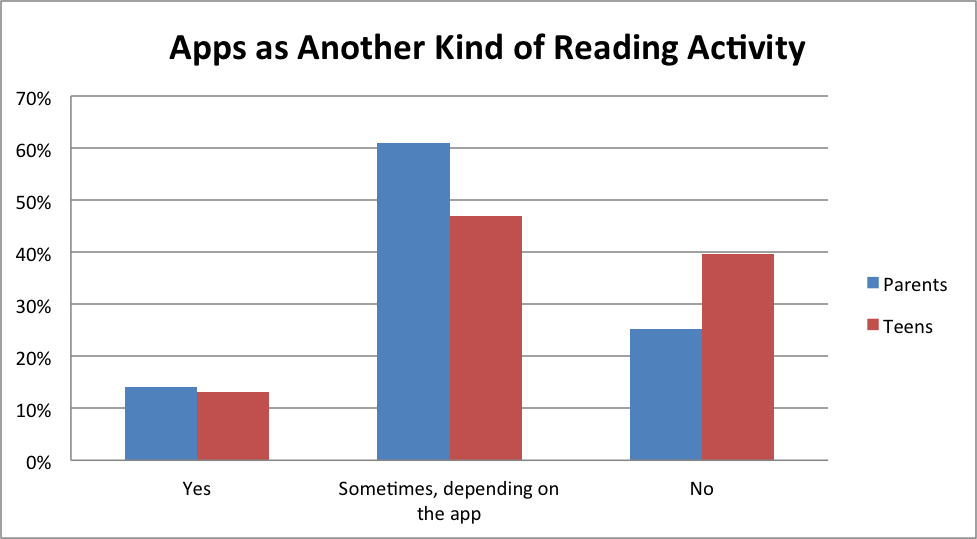It has been almost five years since Apple coined the phrase “There’s an app for that.” Now, as we head into the time of year when smartphones, tablets, and other app-using devices fly off the shelves, let’s look at which apps and devices are the most popular among Canadians.
As part of our recent study of reading trends among young people in Canada, Measuring Attitudes and Adoption of Digital Content for Kids and Teens, we asked a series of questions about app usage and attitude towards apps as they relate to reading.
Devices
You would be hard-pressed to walk into an average Canadian household and not find some kind of personal electronic device. We found that parents of children aged 0–13 have an average of around 6.4 devices per household and teens report that they regularly use approximately 4.8 devices. 55% of parents currently own tablets, and 27% of teens regularly use a tablet. Both teens and parents, as you would expect, also regularly use smartphones.

We also asked parents how long their children had been using mobile devices. Only a quarter of children ages 0–8 do not currently use a mobile device, and this figure is cut in half for children 9–13. When teens are spending their own money, the two items they purchase most are iPhones and other types of smartphones.
This easy access to mobile devices makes sense when you consider that nearly half of the parents we surveyed strongly agree that apps have the potential to be beneficial educational tools. Children are now gaining access to apps from a very young age: By the time they are three or four years old, 62% of boys and 61% of girls have access to Apple or Android devices.
Types of Apps
According to teens and parents, game apps are by far the most popular type of app. Almost every type of app appears on more devices as age increases, with the exception of book-related apps, whose usage steadily declines as age increases.

Apps and Reading
We asked parents and teens if they thought of apps as another kind of reading activity. More teens than parents said that they do not, but the majority of both groups believe that it depends on the app.

With the increasing presence of mobile devices in the hands of children and teens, it’s interesting to keep an eye on new trends in the ownership and usage of mobile devices and apps.
For more information about digital content consumption in young Canadians and their parents, check out our Kids & Teens E-Reading infographic. And don’t forget to pick up your own copy of Measuring Attitudes and Adoption of Digital Content for Kids and Teens for a wealth of insight into this growing market.


